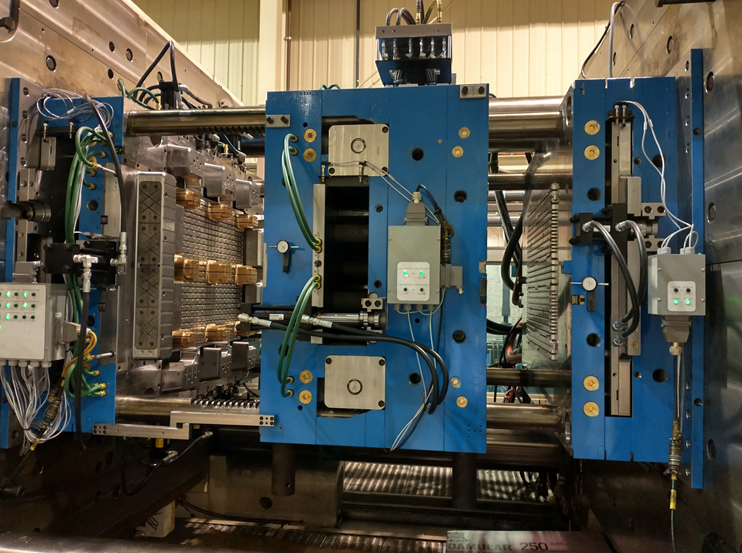“Aerospace Molding Parts: Precision Engineering for High-Flying Performance”
Aerospace Molding Parts: Precision Engineering for High-Flying Performance
In the field of aerospace engineering, precision and performance are of utmost importance. Every component used in aircraft and spacecraft must meet stringent quality standards in order to ensure the safety and reliability of these high-flying machines. Amongst the various manufacturing processes used in the aerospace industry, molding plays a critical role in producing parts that meet these demanding requirements.
Aerospace molding parts are specifically engineered to withstand the extreme conditions encountered during flight. These parts are subjected to high temperatures, intense vibrations, and immense pressure changes, making their durability and accuracy crucial. From engine components to structural elements, aerospace molding parts are integral to the overall performance of an aircraft or spacecraft.
One of the key advantages of aerospace molding is the ability to create complex shapes with precision. The molding process involves shaping a material, typically a polymer or a composite, into the desired form using a mold. This allows manufacturers to create intricate parts that are tailored to specific design requirements. The use of molds also ensures consistency in production, leading to parts that have identical dimensions and performance characteristics.
The materials used in aerospace molding must possess exceptional properties to withstand the demanding conditions of aerospace applications. Polymers such as polyether ether ketone (PEEK) and polyimides are commonly used due to their high-temperature resistance, chemical stability, and mechanical strength. These materials are capable of maintaining their integrity even when exposed to extreme heat and pressure, making them ideal for aerospace applications.
The molding process itself requires a high degree of precision and control. The material is typically heated to a liquid or semi-liquid state before being injected into the mold cavity. The mold is carefully designed to incorporate the desired shape and features of the part. Once the material is injected, it is allowed to cool and solidify, taking on the shape of the mold. This process ensures that the final part is dimensionally accurate and free from defects.
In addition to precision, aerospace molding parts must also meet rigorous quality standards. These parts undergo thorough testing to ensure that they can withstand the demanding conditions of flight. Non-destructive testing methods, such as X-ray and ultrasound inspections, are used to detect any internal defects that may compromise the structural integrity of the parts. Furthermore, dimensional inspections are performed to verify that the parts meet the specified tolerances.
The production of aerospace molding parts requires collaboration between engineers, designers, and manufacturers. The design of the mold plays a crucial role in determining the final performance of the parts. Engineers work closely with mold designers to optimize the mold geometry and minimize any potential manufacturing challenges. This collaboration ensures that the molded parts meet the necessary specifications and perform as intended.

The aerospace industry is constantly evolving, with new technologies and materials being developed to enhance performance and safety. As a result, the demand for high-quality aerospace molding parts continues to grow. Manufacturers are investing in advanced molding techniques, such as additive manufacturing, to further improve the precision and efficiency of the production process. These advancements enable the production of highly complex parts with reduced lead times.
In conclusion, aerospace molding parts are essential to the success of aircraft and spacecraft. These precision-engineered components withstand the extreme conditions of flight, providing the strength, durability, and accuracy required for high-flying performance. With advancements in molding techniques and materials, the aerospace industry is poised to continue pushing the boundaries of engineering excellence. The future of aerospace molding holds great promise for the development of even more innovative and efficient parts that will shape the future of aviation and space exploration.
-
Creating Complex Plastic Molds for Large Scale Production
2023-8-18
Introduction In today's manufacturing industry, the demand for high-quality plastic products is ever-increasing. To meet...
Visualizza dettagli -
Creating Solutions with Plastic Moulding: Innovations in English
2023-10-10
Shaping a Versatile Future: The Impact of Plastic Moulding Plastic moulding is a versatile manufacturing process ...
Visualizza dettagli -
How do metal insert molds play a role in manufacturing?
2024-11-26
Metal insert molds play an important role in the manufacturing industry. They not only improve the production efficiency...
Visualizza dettagli -
Injection Molding Parts: High-Quality Components for Manufacturing
2023-4-26
Injection molding parts are components that are manufactured using the injection molding process. This process involves ...
Visualizza dettagli -
Creating the Perfect Plastic Chair Mold for Ultimate Durability and Comfort
2023-12-13
Plastic chairs have become an integral part of our lives. From homes to offices, cafes to outdoor events, plastic chairs...
Visualizza dettagli -
Come progettare un prodotto per un'azienda di stampaggio a iniezione e prototipazione
2023-2-21
Lo stampaggio ad iniezione è una delle tecnologie così importanti nella nostra vita di tutti i giorni, quasi non ce ne accorg...
Visualizza dettagli







